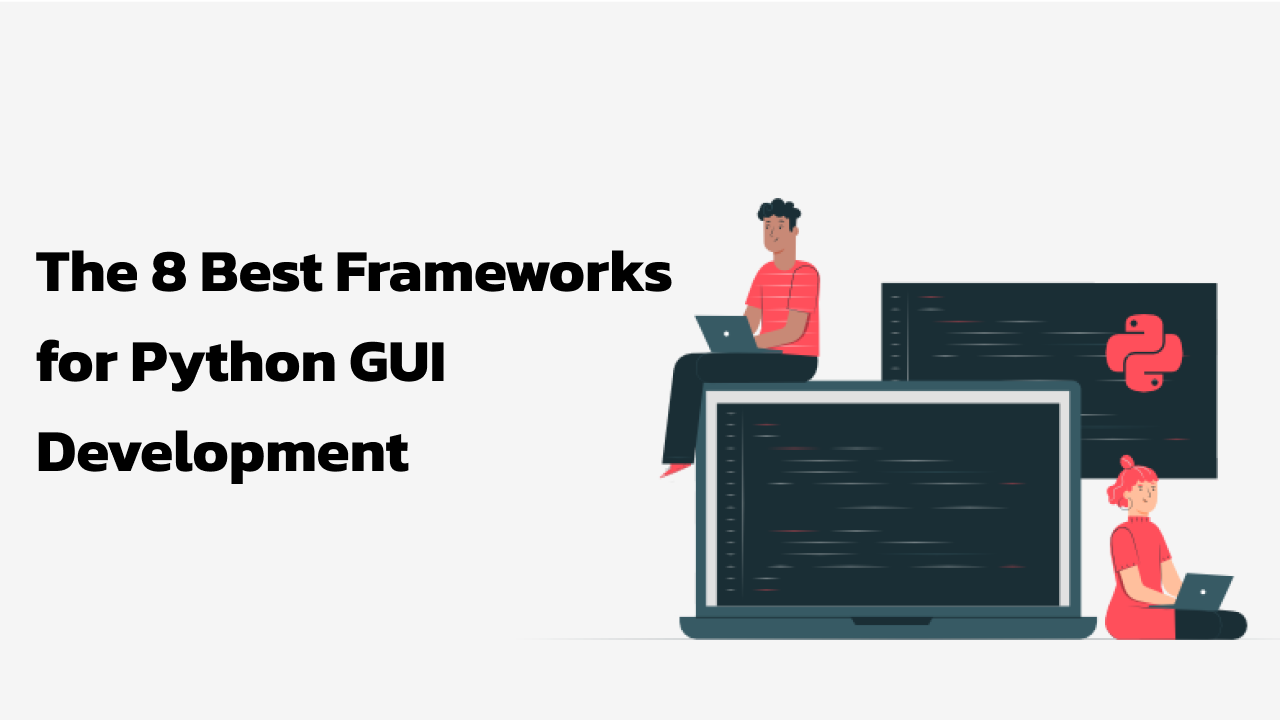The 8 Best Frameworks for Python GUI Development
 Thomas Adman
Thomas Adman
Choosing a framework is the most essential part of creating user-friendly and eye-pleasing applications in Python GUI development. Among many others, one that is instrumental in bringing simplicity to the development, functionality, and aesthetic appeal of your application will be discussed thereafter.
Be it for the first-time or experienced developer, it is in this wide range of frameworks that tuning could be done according to various needs and skill levels. In the blog, we will select eight of the best Python GUI Development Frameworks available in 2024, focusing on features, benefits, and use cases.
1. Tkinter:
Overview:
Tkinter is Python's standard interface to the Tk GUI toolkit. It's the most widely used library in Python for developing Graphical User Interface applications. Being a part of the Python standard distribution, it is available on all platforms where Python is available.
Features:
Easy to use: It has very simple syntax and comprehensive documentation; hence, it becomes a great option for the beginner.
Cross-platform: Work on Windows, macOS, and Linux.
Lightweight: It is suitable for small to medium-sized applications
Use Cases: Educational tools, Small utility applications, Simple desktop applications.
2. PyQt:
Overview:
PyQt is a set of Python bindings for the Qt application framework and was developed by Riverbank Computing. It puts together the power of Qt with the simplicity of Python.
Features:
Rich Widget Set: Offers a wide range of UI elements.
Cross-Platform: Works on all major operating systems.
Rich: Advanced features, particularly in terms of networking and database integration, are available and well-supported.
Use Cases: Complex applications, multimedia tools, and software with advanced UI requirements.
3. Kivy:
Overview:
Kivy is an open-source Python library for the rapid development of applications that make use of innovative multitouch gestures. It is truly cross-platform and runs on Windows, macOS, Linux, Android, and iOS.
Features:
Touch Support: Designed to support touchscreen interfaces.
Highly Customizable: High degree of customization of UI elements.
Cross-Platform: Write once, run anywhere capability.
Use Cases: Mobile applications, Touch-based applications, and Multimedia apps.
4. PyGTK:
Overview:
It is a set of Python wrappers for the GTK+ graphical user interface library. This allows it to act as a package for creating applications with a GNOME/GTK interface.
Features:
Integration with GNOME: Best for applications in the GNOME desktop environment.
Cross-Platform: Any platform; however, the maximum utilization is attained in Linux.
Comprehensive: On complex widgets and advanced UI features it supports.
Use Cases: Applications with a GNOME, Linux desktop, and complex UIs.
5. wxPython:
Overview:
wxPython is a collection of Python bindings for the wxWidgets C++ library, which allows the Python programmer to create applications for Windows, Macs, and Linux.
Features:
Native Look and Feel: It provides a look that is native to the respective operating system in use.
Abundant Widgets: It contains a good amount of customizable widgets.
Cross-Platform: Genuinely cross-platform with native controls.
Use Cases: desktop applications that need native look and feel; utility applications, enterprise software
6. PySide:
Overview:
PySide is another name for Qt for Python; it's the official set of Python bindings for Qt libraries, so it's provided directly by the Qt Company itself.
Features:
Official Support: The Qt Company itself provides direct support.
Rich Feature Set: It also ships with the most available UI elements and tools in its comprehensive set, much like PyQt.
Cross-Platform: Major OSs are supported.
Use Cases: Commercial applications, complex UIs, cross-platform desktop applications
7. PySimpleGUI:
Overview:
PySimpleGUI makes available a higher-level GUI API that is easier to use, resulting in much simpler Python code.
Features:
Easy to Use: Lowers the number of lines of code necessary for a GUI.
Easy to Learn: Great for new programmers and when prototyping.
Cross Platform: Runs on Windows, macOS, and Linux.
Use Cases: Rapid Application Development, Prototyping, and Educational Tools.
8. Dear PyGui
Overview:
Dear PyGui is a very simple but powerful Python GUI framework. It has a high degree of usability and many various features.
Features:
Modern Design: It features a modern and nice-looking interface.
Performance: Fast rendering of complex interfaces.
Cross-Platform: Works on all major operating systems.
Use Cases: Interactive applications, game development tools, real-time data visualization.
Conclusion:
These GUI Python frameworks would, of course, be chosen according to the needs of your project. Be it Tkinter and PySimpleGUI, which are easy to use or simple, or the advanced features and cross-platform capabilities required by PyQt, Kivy, and wxPython, there will be some Python GUI frameworks for your needs.
Outsource your custom Python development services requirements to a Python Development Company in India and hire Python developers in India who can put these frameworks into play to build resilient, user-friendly applications. Hire a Python development company like Tuvoc Technologies now.
Subscribe to my newsletter
Read articles from Thomas Adman directly inside your inbox. Subscribe to the newsletter, and don't miss out.
Written by
Thomas Adman
Thomas Adman
Tuvoc Technologies began with a passion for growth, initially without a clear direction. However, leveraging our robust management background and an open mindset for exploration, we embarked on our journey in the B2B industry.